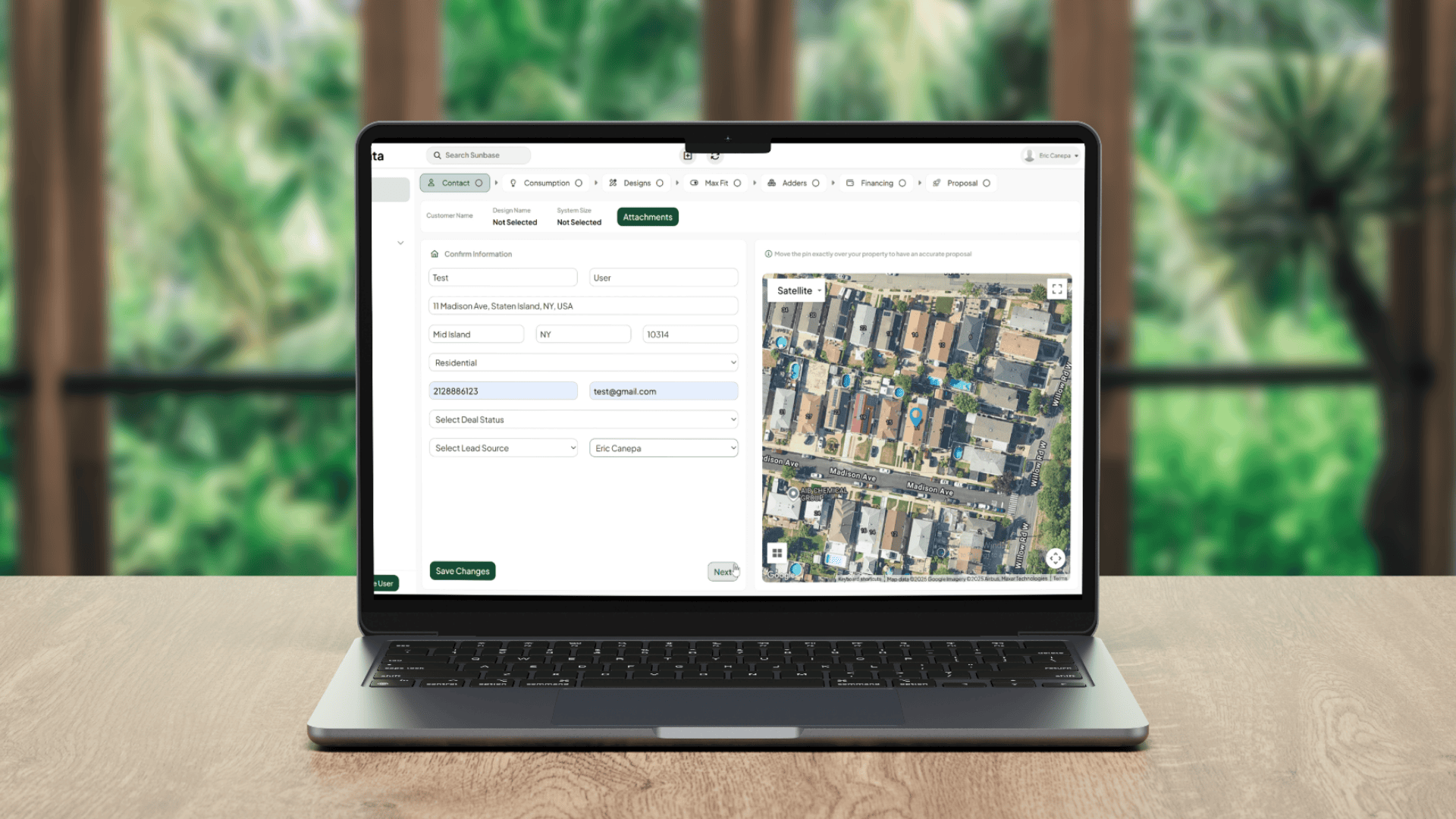July 17, 2023
In today's fast-paced and highly competitive business world, the ability to generate leads has become an essential element for growth and success. Acquiring loyal customers and increasing revenue is crucial for businesses, but manually generating new leads, can be a time-consuming and challenging task that requires a significant amount of resources.
This is where lead generation automation tools come in. By automating lead generation processes, businesses can save time, increase efficiency, and improve their chances of success in generating leads. In this article, we will explore the basics of lead generation automation, the tools and strategies used for automated processes, and best practices for implementing this in your business.
Understanding the Basics of Lead Generation Automation
Lead generation and marketing automation tool is a powerful tool that can help businesses and organizations generate more leads, convert them into business buyers, and ultimately increase their bottom line. Automation enables companies to capture information from potential customers by using forms and emails.
This data can be used to better understand the behavior of their target audience, create personalized content, deliver targeted offers, and more. With automation, businesses can mine customer data and generate reports that provide insights into customer demographics and preferences, enabling them to tailor their marketing strategies accordingly.
In addition to capturing valuable information about potential customers, automation also has customer analytics and enables businesses to track leads through the sales cycle from initial contact to purchase. Companies can monitor how often prospects interact with their campaigns and identify areas where additional nurturing is needed. Automated lead scoring and segmentation can help businesses prioritize their best leads for follow-up, further increasing conversion rates.
Automation is an invaluable tool for businesses of all sizes that are looking to increase sales and convert more leads into profitable customers. By leveraging the power of automated marketing tools, companies can quickly identify high-value prospects, deliver relevant content at scale, and ensure they’re targeting the right people with the right message. With careful implementation, automation can be a powerful tool for driving increased revenue and long-term customer loyalty.
Tools and Strategies for Automating Lead Generation
Automating lead generation can be a game-changer for businesses looking to acquire more qualified leads and increase revenue. To achieve this goal, businesses need to have the right tools and strategies for outbound lead generation in place. In this section, we will explore the most effective tools and strategies for automating lead generation.
Social Media Automation Tools:
Social media platforms such as Facebook, Twitter, and LinkedIn can be powerful tools for generating qualified leads. However, managing social media accounts and posting content can be a time-consuming task. This is where social media automation and analytics tools come in. These tools allow businesses to schedule social media posts, monitor social media activity, and track the performance of their social media campaigns. By automating social media, businesses can save time and resources while still generating leads through targeted social media campaigns.
Chatbots:
Chatbots are automated messaging programs that simulate human conversation. They can be used to answer frequently asked questions, provide customer support, and even collect contact information from potential leads. Chatbots can be integrated into websites, social media platforms, email marketing software, and messaging apps, providing businesses with a convenient way to engage with customers and generate leads 24/7.
Landing Pages:
A landing page is a standalone web page designed to convert visitors into leads. A well-designed landing page can be an effective tool for generating qualified leads. By creating a landing page with a clear call-to-action, businesses can encourage visitors to provide their contact information in exchange for valuable content or an offer. Landing pages can be integrated with email marketing campaigns and lead nurturing workflows to further automate the lead generation process.
Email Marketing Automation:
Email marketing and email automation is a powerful tool for lead generation. By setting up automated email campaigns, businesses can deliver targeted content to potential leads based on their interests and behavior.
For example, a welcome email series can be triggered when a new lead signs up for a free plan, or newsletter or downloads a free guide. Automated email campaigns can also be used to nurture leads through the sales funnel, providing relevant content and offer at each stage of the buying process.
Webinars:
Webinars are live or pre-recorded online events that allow businesses to engage with potential leads in real-time. Webinars can be used to showcase products or services, provide valuable industry insights, and offer exclusive promotions. By providing high-quality content and collecting contact information from attendees, businesses can generate qualified leads and establish themselves as thought leaders in their industry.
Content Marketing:
Content marketing involves creating valuable content that attracts and engages potential leads. By providing helpful resources such as blog posts, infographics, and e-books, businesses can position themselves as experts in their field and generate leads through inbound marketing strategies. Content marketing can be automated by using tools such as content management systems, editorial calendars, and marketing automation software.
Developing a Workflow for Automated Lead Generation
Automating your lead generation efforts requires a well-planned and executed workflow. Developing a workflow for automated lead generation involves a step-by-step process that streamlines automated lead generation important as capture, nurturing, and conversion. Here are some essential steps to consider when developing your lead generation workflow.
Identify your target audience:
The first step in developing a successful lead generation workflow is to identify your target audience. Who are you trying to reach? What are their interests and pain points? By understanding your target audience, you can create content and campaigns that speak directly to their needs.
Create valuable content:
Valuable content is at the heart of any successful lead-generation strategy. Create content that educates, informs, and engages your target audience. Consider creating different types of content such as blog posts, e-books, infographics, videos, and webinars.
Build a landing page:
A landing page is a standalone page that is designed to capture leads. A well-designed landing page can significantly increase your chances of converting website visitors into qualified leads. Make sure your landing page has a clear and compelling headline, a strong call to action, and a lead capture form.
Create a lead magnet:
A lead magnet is an incentive that you offer in exchange for a visitor's contact information. Lead magnets can be anything from e-books to free trials to exclusive content. Make sure your lead magnet is valuable and relevant to your target audience.
Develop a lead scoring system:
A lead scoring system is a way to prioritize your leads based on their level of engagement with your brand. By assigning points to different actions, you can determine which leads are most likely to become customers.
Implement an email marketing campaign:
Email marketing is a powerful tool for nurturing leads and converting them into customers. Develop an email marketing campaign that delivers valuable content, offers, and promotions to your leads.
Use marketing automation software:
Marketing automation software can be a few tools to help you automate your lead generation efforts, track leads through the sales funnel, and deliver personalized content to your leads. Choose software that integrates with your existing marketing tools and meets your specific needs.
Continuously optimize your workflow:
The final step in developing a successful lead generation workflow is to continuously optimize your efforts. Analyze your data, track your progress, and make changes as necessary to improve your lead generation strategies and increase your ROI.
Steps for a Successful Lead Generation Campaign
A successful lead generation campaign involves more than just attracting leads. It requires a strategic approach that involves leading nurturing, qualifying, and ultimately converting them into paying customers. To achieve this, businesses need to develop a clear plan and use the right tools and tactics. Here are some of the steps involved in a successful lead generation campaign and the key strategies businesses can use to optimize their efforts.
Step 1: Define Your Target Audience
The first step in any successful lead generation campaign is to identify and understand your target audience. Who are the people you want to attract as prospective customers? What are their pain points, interests, and demographics? Once you have a clear understanding of your ideal customer, you can tailor your messaging, content, and lead-generation strategies to resonate with them.
Step 2: Use the Right Lead Generation Tool
The right lead generation tool is critical for success. There are many lead generation tools available, each with its own set of features and capabilities. The most useful lead-generation tools are Sunbase, HubSpot, Marketo, and Pardot. These tools can help businesses automate their lead capture and nurturing processes, track leads through the sales funnel and provide detailed analytics and reporting.
Step 3: Develop a Content Strategy
Developing a content strategy is an essential step in any successful lead-generation campaign. Businesses need to create high-quality, relevant content that resonates with their target audience. Content can take many forms, including blog posts, ebooks, whitepapers, videos, and webinars. By developing a content strategy, businesses can attract and engage prospective customers, nurture them through the sales funnel, and ultimately convert them into paying customers.
Step 4: Leverage Social Media
Social media is an excellent platform for businesses to generate leads and engage with their target audience. Platforms like LinkedIn, Twitter, and Facebook allow businesses to build relationships with prospective customers, share valuable content, and promote their products and services. By using social media, businesses can increase brand awareness, attract qualified leads, and drive traffic to their website.
Step 5: Engage Your Sales Teams
Engaging your sales teams is crucial for success. Your marketing team the front-line representatives of your business, and they need to be fully engaged in the lead-generation process. Involve your sales teams in the lead generation process to get valuable feedback on the quality of leads generated, identify areas where additional nurturing is needed, and ultimately improve your conversion rates.
Step 6: Qualify Your Leads
Not all leads are created equal, and businesses need to focus their efforts on the most qualified leads. Qualify the leads to prioritize your follow-up efforts and focus on the leads most likely to convert into paying customers. Qualifying leads involves assessing their level of interest, budget, and decision-making authority.
Step 7: Monitor and Adjust Your Campaign
Monitoring and adjusting your lead generation campaign is essential for success. Businesses need to track their campaign's performance and adjust their strategies and tactics as needed. By regularly reviewing your analytics and metrics, you can identify areas where your campaign is underperforming and make the necessary adjustments to improve your results.
Role of Artificial Intelligence (AI) in Automating Leads
The role of Artificial Intelligence (AI) in automating lead generation has been transformative. It is reshaping industries across the board. As businesses seek to streamline their sales processes and unlock new growth opportunities, AI has emerged as a game-changing force, providing advanced tools and strategies to automate leads and drive unprecedented revenue growth.
Understanding the Customer Journey:
To effectively automate leads, it's important to understand the customer journey. From the moment a potential customer becomes aware of your business to their final purchase decision, each step is significant. You should map out this journey to identify key touchpoints and customer interactions where automated tools can streamline the process and generate valuable sales leads.
Lead Scoring:
AI can automate the lead scoring process by analyzing data and assigning scores based on predefined criteria. This helps sales teams prioritize their efforts on high-quality leads, increasing efficiency and maximizing conversion rates.
Personalized Communication:
AI-powered chatbots and virtual assistants can engage with leads in real time, providing instant responses and personalized recommendations. This not only saves time but also enhances the customer experience, making potential customers more likely to convert.
Predictive Analytics:
By leveraging AI algorithms, businesses can predict lead behavior and identify patterns that indicate a higher likelihood of conversion. This enables sales teams to focus their efforts on leads that are most likely to make a purchase, increasing overall sales effectiveness.
Automated Lead Nurturing:
AI-driven automation tools can handle repetitive lead nurturing tasks, such as sending follow-up emails or scheduling appointments. This frees up valuable time for sales teams to focus on building relationships and closing deals.
Data-driven Insights:
AI algorithms can analyze vast amounts of data to provide actionable insights on lead generation and conversion to relevant customers. By harnessing this data, businesses can optimize their marketing and sales strategies, making informed decisions to drive better results.
Lead Qualification:
AI-powered systems can evaluate lead information, such as demographics and behavioral data, to determine if they fit the ideal customer profile. This helps sales teams prioritize their efforts on leads that have a higher probability of becoming long-term, valuable customers.
Efficient Lead Management:
AI platforms can automate lead tracking and management, ensuring that no potential customer falls through the cracks. This streamlines the sales process, reduces manual errors, and enables teams to stay organized and responsive.
Best Practices for Implementing Automated Lead Generation in Your Business
Here are key practices such as LinkedIn Sales Navigator, unlimited email open notifications, online advertising, prospect email strategy, and automated processes to optimize your lead generation efforts and foster meaningful customer relationships.
Define Your Ideal Customer Profile (ICP) :
As you already know, ICP generates leads. To attract the right leads, it's crucial to define your ideal customer profile (ICP). Understand their needs, pain point, and preferences to create buyer personas that humanize your audience.
Craft Compelling Content
Develop compelling and personalized content that resonates with their interests, employing storytelling techniques and infusing your brand's personality. Utilization of appropriate pop-ups
also helps to connect with your audience on a deeper level. With automated notifications, you can build authentic relationships and increase engagement.
Optimize Landing Pages
Create visually appealing and user-friendly landing pages that capture and convert leads effectively. Implement clear and compelling call-to-actions that provide visitors with a reason to take the next step. Utilize LinkedIn Sales Navigator and online advertising campaigns to drive targeted traffic to your landing pages.
Leverage Data and Analytics:
Leverage data and analytics to monitor important metrics such as conversion rates, click-through rates, and engagement levels. This data-driven approach allows you to make informed decisions, refine your strategies, and continuously improve your automated lead-generation process.
Nurture Leads with Personalized Automation
Implement personalized email campaigns with unlimited email open notifications to nurture your leads. Craft automated follow-ups and targeted messaging that align with their specific interests and previous interactions.
Continuous Refinement:
Show genuine interest in their needs and provide valuable insights to establish trust and increase the likelihood of conversion. Regularly review and refine your automated lead generation system, adapting it to evolving market trends and customer preferences. Stay agile and adaptable to ensure optimal results.
Social Media Ads and Filter Leads:
Utilize social media ads to expand your reach and attract potential leads from platforms like LinkedIn, which boasts a vast community of professionals. Develop a prospect email strategy to filter and segment leads based on their engagement and interaction with your content. Implement link tracking to monitor the effectiveness of your email marketing campaigns and identify areas for improvement.
Maximize Website Traffic:
Drive traffic to your website through effective online advertising and captivating content. Leverage automated processes to streamline lead capture, qualification, and nurturing. Utilize drag-and-drop landing page builders to create visually appealing and conversion-focused pages and blog posts. Implement email automation to deliver personalized messages at scale, ensuring timely and relevant communication with your leads.
Wrapping Up:
Implementing an automated lead generation system can revolutionize your sales efforts with just a few clicks. By following these practices, you can generate more high-quality leads and improve the effectiveness of your sales team. Remember to prioritize customer experience and regularly evaluate the performance of your campaigns to ensure that you’re delivering the best results possible.
One Platform. Zero Chaos. Run Your Entire Business in One Place.
Sunbase replaces your CRM, proposals, scheduling, job tracking, and reporting tools — all inside one clean, connected platform.
About Sunbase
The All-In-One Platform to Run Your Entire Business
Sunbase helps you organize operations, streamline daily workflows, and manage everything - from first customer contact to final project deliver- in one connected system.
Our Mission
- Organize your business.
- Optimize your workflow.
- Automate what slows you down.
Why Businesses Choose Sunbase
One Connected Workflow
Replace scattered tools and manual processes with a single platform that brings together your team, tasks, customers, jobs, and performance data.
🌎 Global Presence
Serving the United States, Canada, India, LATAM, Australia, and 10+ international markets.
👥 11,000+ Users
Trusted by contractors, installers, project managers, sales teams, and field technicians.
🏗️ Built for All Sizes
From small contracting teams to fast-growing enterprises, Sunbase adapts to your workflow.
Useful Links For You
Stop Managing Your Business Manually. Automate It.
Sunbase automates workflows, reduces mistakes, and helps your team get more done - without hiring extra staff or juggling multiple tools.











